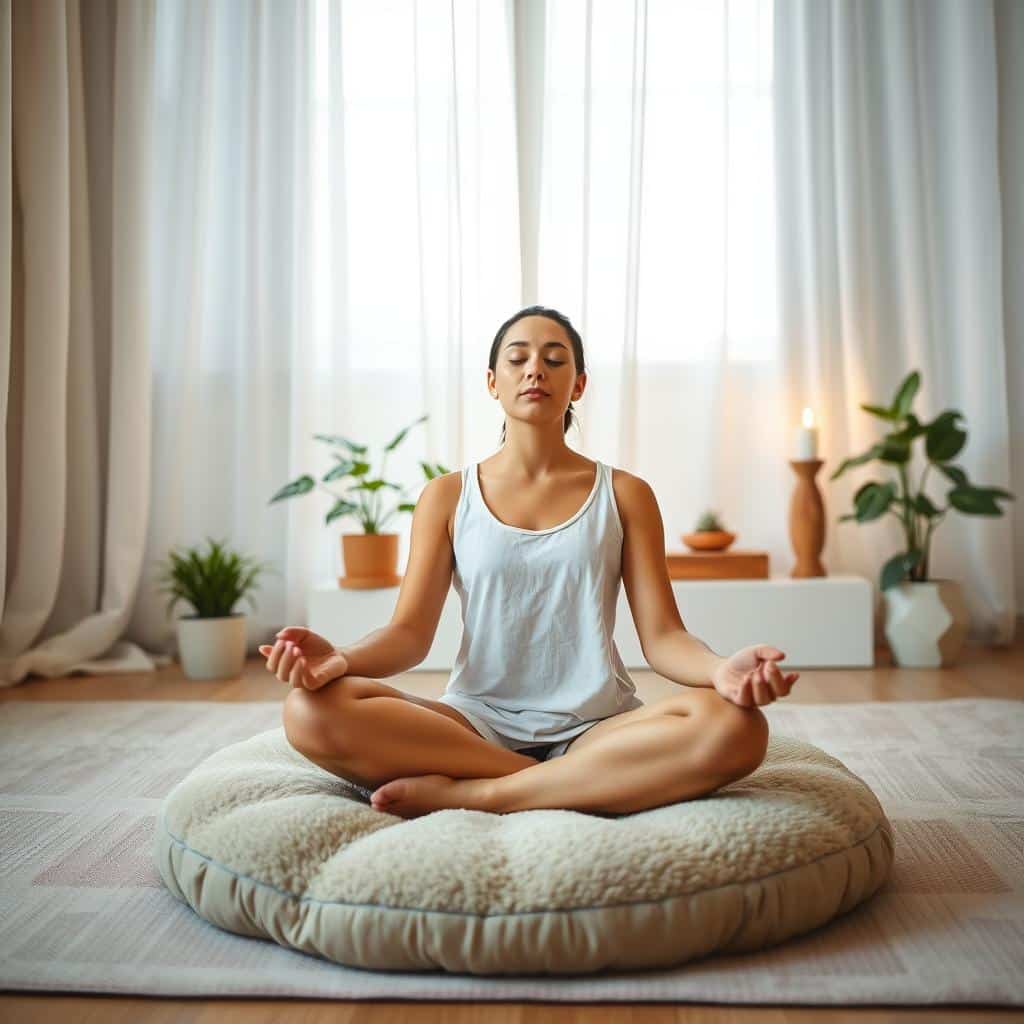I want a simple, reliable start that fits my life. This short guide shows how to get started with a brief practice that sets a calm tone for the day and respects my schedule.
I value quiet time before the noise begins. In that window I can meet my mind with curiosity and kindness, notice my breath, and choose intent over autopilot.
Research links mindfulness to lower stress, better attention, and clearer decisions at work and home. I’ll share science-aware steps, from choosing a place and time to simple breath cues you can use for one to ten minutes.
Try this as a one-week experiment. I’ll offer guided and unguided options, a five-minute sequence for busy days, and behavior-design tips to help me repeat the routine without the pressure of perfection.
Key Takeaways
- I aim for a short, realistic practice that fits my life.
- Quiet early moments help me meet my mind with kindness.
- Evidence shows benefits like reduced stress and better focus.
- Simple breath cues and short sessions make it easier to start.
- Treat the week as an experiment and adjust the routine as needed.
Why I start my day with mindfulness and meditation
Starting with a small, deliberate pause gives me better access to choice during the day. I find that a brief practice steadies my attention and creates a kinder relationship to my thoughts and emotions.
When I sit for even a few minutes, I notice stress ease and focus sharpen. This shift helps me respond rather than react in meetings and at home. The practice translates into clearer choices throughout my life.
I tested a short morning experiment for a week and saw consistency grow in the early quiet. Everyone’s rhythm differs, so I treated that week as research—not a rule.
I practice curiosity toward wandering thoughts, label them lightly, and return to the breath without judgment. Feeling sleepy or restless sometimes is normal; I treat those moments as part of training, not failure.
- Start small: a few minutes stacks into real change.
- Focus on noticing, returning, and gentle attention.
- See benefits: lower stress, better attention, kinder interactions.
Morning meditation routines
I find the first quiet hours offer a simple scaffold for steady attention. A short, repeatable practice in that window makes it easier to turn intention into habit.
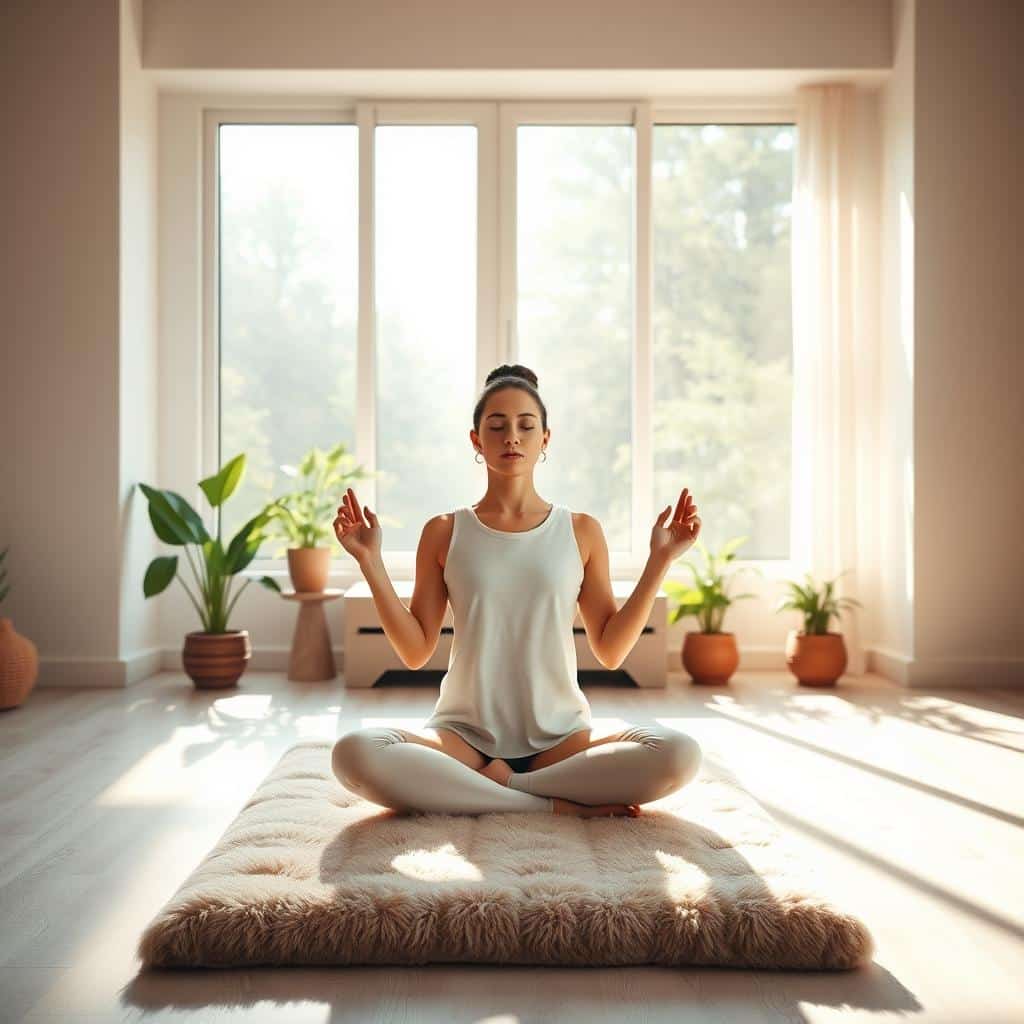
Five reasons mornings work for the mind and body
- Early quiet: slows distractions so I can focus.
- Fresher mind: fewer notifications arrive while I sit.
- Consistent time: builds habit strength across days.
- Rested body: supports posture and steady breathing.
- Small wins: a brief success boosts motivation for the day.
How mindfulness lowers stress and quiets thoughts
When I shift from autopilot to intentional awareness, my reactivity eases. Watching the breath and naming distractions reduces mental chatter over time.
The lasting attention benefits researchers observe
Research indicates training counters habituation, lowers mind wandering, and supports problem solving. Some studies even report attention gains that can last years after continued practice.
Choose your best time and place to meditate in the morning
I pick a short window I can truly protect so the practice actually happens. I anchor that slot before I check my phone or start breakfast. That simple rule makes the session real, not optional.
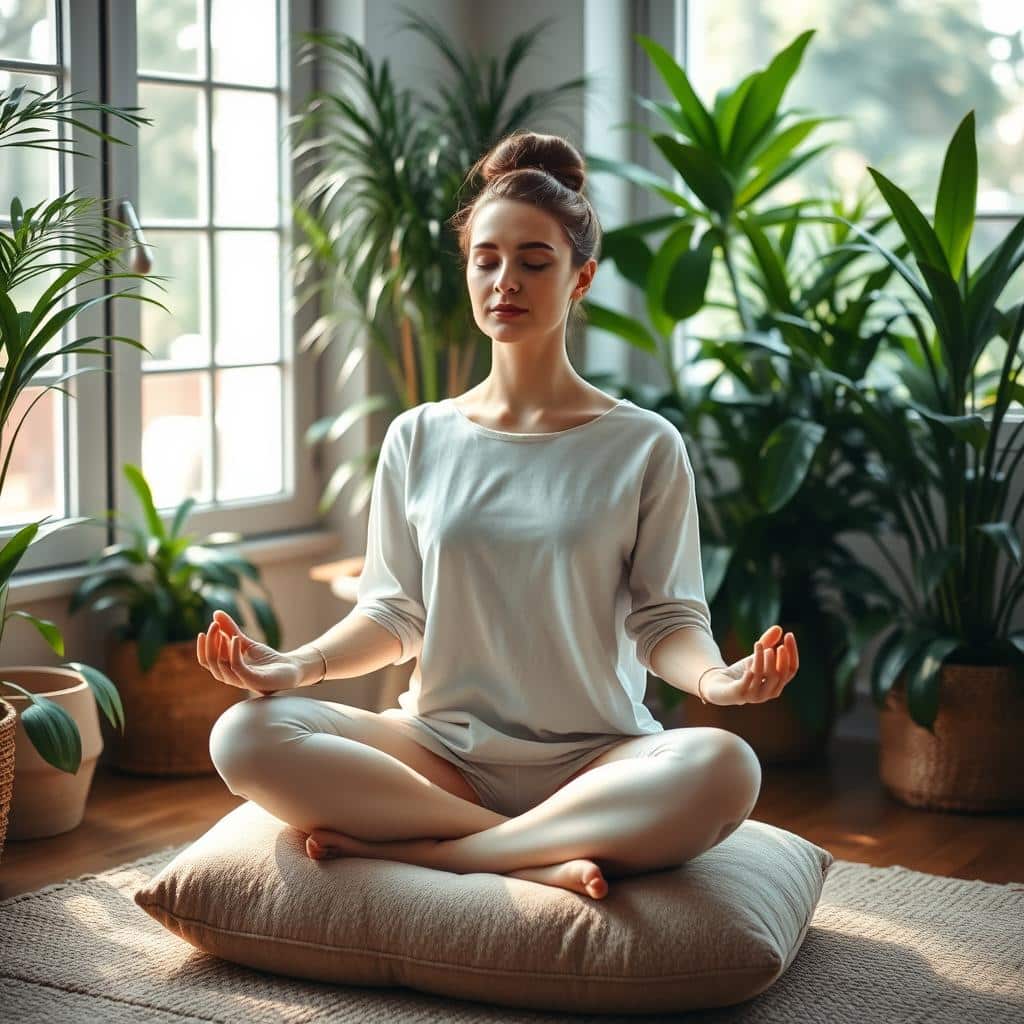
I look for a spot that feels seamless with my life. Suitable places include sitting upright in bed, a favorite chair, a sofa, a cushion on the floor, or even sitting in my car for ten minutes before I leave.
- I decide on a reliable time I can protect most days so the session becomes steady.
- I choose a place where I can find comfortable posture and low distraction.
- I keep the setup simple to remove friction; less prep means more consistency.
- I test timing across a week and adjust earlier or later to match my energy.
- I treat those minutes as the first appointment of the day — a small meeting with myself.
Set up a simple practice space that invites calm
I prepare a small corner that signals my mind it’s time to settle. A clear, consistent place removes the small frictions that stop me from sitting.
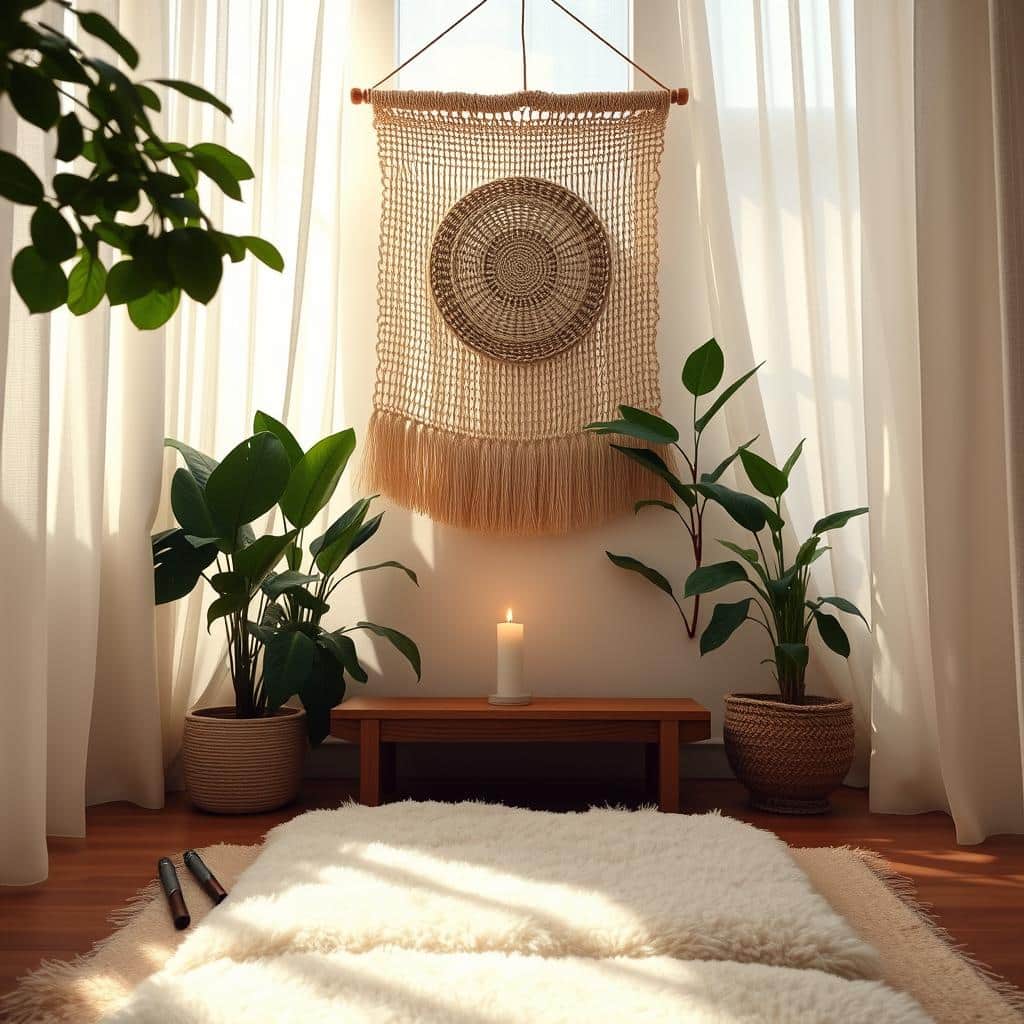
Keep lights low and minimize digital distractions
I wake to a soft sound and keep house lights low so my body eases into stillness. I go straight to the nook and leave phones and laptops outside the space.
No news, no email, no feeds until the short session ends. A simple timer sits within reach so I start on time.
Create a peaceful nook with a cushion or chair
I choose a supportive seat that lets my back stay upright and relaxed. A single calming object — a plant or small art piece — cues my sense of intention.
Bring your coffee or tea mindfully into the space
If I have a preferred beverage, I treat the first sip as part of arriving. I notice the warmth, aroma, and breath as I sit. This small habit grounds the first part of my morning and supports steady attention.
- Soft wake sound to reduce abrupt arousal
- Cushion or chair for upright, relaxed posture
- Phone and notifications kept outside the nook
- Timer, blanket, or eye pillow within reach
| Item | Purpose | Quick tip |
|---|---|---|
| Cushion or chair | Support upright posture for free breath | Test height so feet rest on the floor |
| Timer | Start and end without checking devices | Use a gentle sound or vibration |
| Calming object | Serve as a sensory cue to settle | Keep it minimal — one item only |
| Beverage (optional) | Anchor the moment with mindful sipping | Notice warmth, aroma, and first breath |
My step‑by‑step morning meditation practice
I take a moment to arrange my seat so my body feels balanced and ready to breathe. This short setup removes friction and makes the rest of the practice simple and reliable.
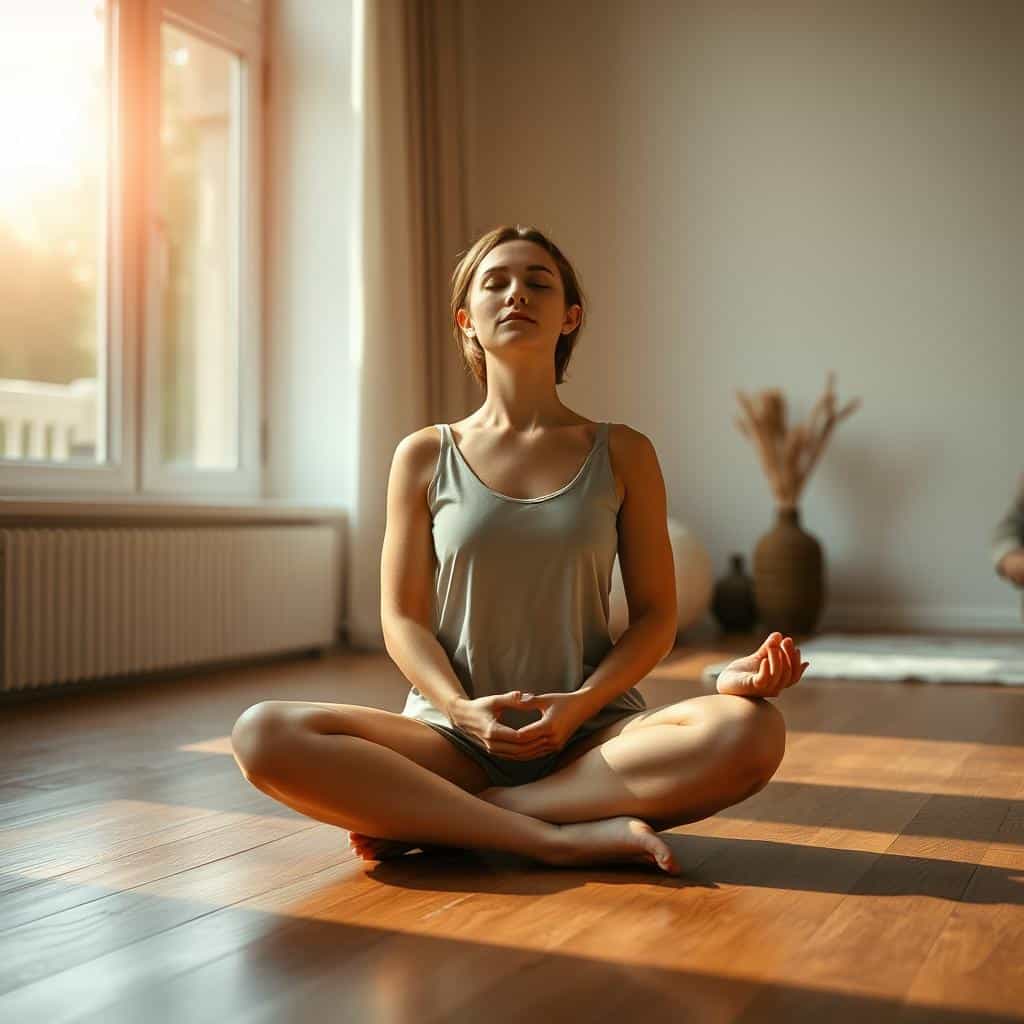
Find your seat and align your posture
I choose a chair, cushion, or kneeling position and sit upright but relaxed. Hands rest easily and my shoulders drop so tension leaves the neck.
Follow the breath and gently return when the mind wanders
I bring attention to the breath at the nostrils or belly and let it be natural. When thoughts drift, I label them—thinking, hearing, feeling—and guide attention back without judgment.
Close with a brief check-in of body, thoughts, and emotions
After the set minutes, I scan the body and notice sensations and emotions as they are. I take one slow inhale, set a simple intention for the day, and stand up slowly to keep a thread of attention into my tasks.
- Softly release face and shoulder tension so breathing moves freely.
- Use short sessions: steady practice trains attention and calms the nervous system.
- Finish by observing sounds, body, and thoughts—no fixing, just noticing.
Guided morning meditation versus unguided practice
Some days I need a steady voice to hold my attention until I can settle into silence. A guided track helps me get started when my mind is scattered. On other days I prefer to sit quietly and follow the breath alone.
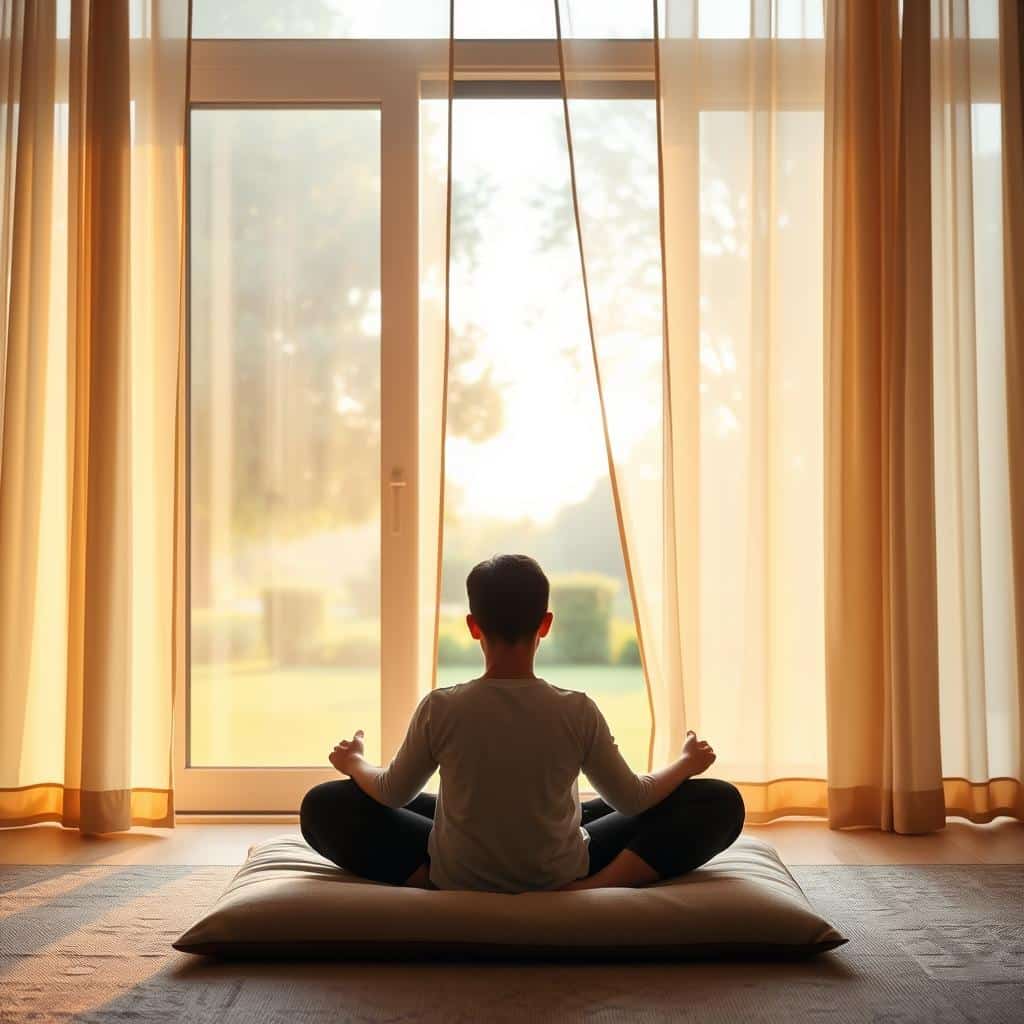
When a guiding voice helps me get started
I use guided morning options when distraction wins. A narrator provides cues and gentle structure. This makes short sessions feel possible and clear.
“Guided practice can spark creativity and sharpen early decisions.”
Body scan, visualization, and breath‑only options
I rotate formats: a quick body scan to release tension, a brief visualization to set intent, or a breath‑only sit to steady attention. Headspace and similar apps offer semi‑guided and unguided tracks and a 10‑day beginner course if I want a foundation.
Short sessions from one to ten minutes for busy days
I choose the time that fits my schedule—one, five, or ten minutes. Guided morning meditations can boost creativity and clarity, while silent sits build self‑reliance. I keep my phone on Do Not Disturb, try a head‑to‑toe scan when I need release, and let what works today guide tomorrow.
A five‑minute meditation to jumpstart your day
I use five clear minutes to steady my breath and prime my body for the tasks ahead. This short practice fits into busy mornings and aims to lift mood and sharpen focus without feeling heavy.
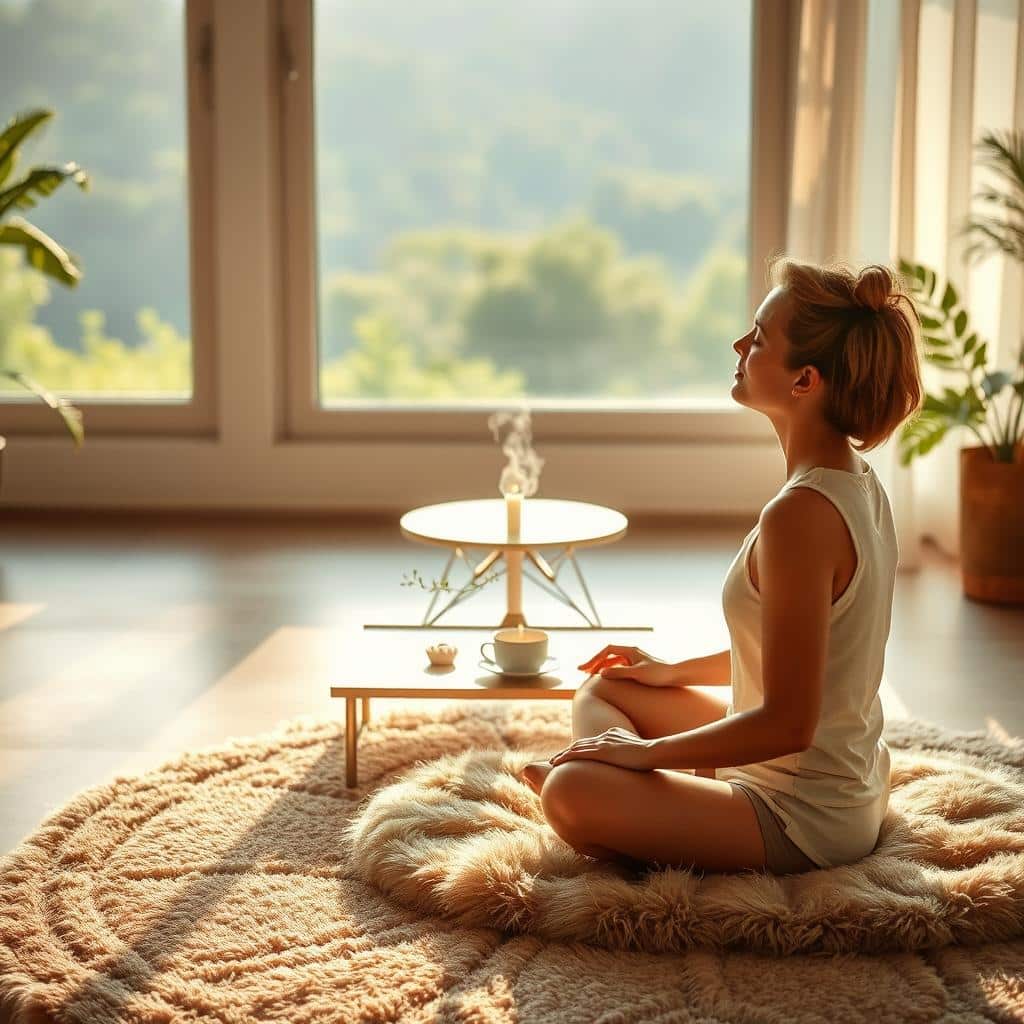
Set a timer and honor the pause at the end of each exhale
I set a five‑minute timer, sit with feet grounded, and choose a posture that lets breathing move easily. I breathe out fully, notice the tiny pause after the exhale, and stay present with that gap.
Let the inhale begin on its own as you settle the mind
I let the next inhale arrive naturally, trusting my body to breathe me. If my mind wanders, I return gently to the breath and to the pause without forcing any rhythm.
- Start: set five minutes and find a steady seat.
- During: let exhales release, honor the pause, receive the inhale.
- End: when the timer chimes, take a fuller breath and bring calm focus into the rest of the day.
I jot a quick note after the sit about how my body and mind feel. Over time, this brief template helps me reliably start day with clearer attention and steadier energy.
Integrate meditation into a morning routine you already do
I turn ordinary tasks into brief anchors that help me start the day with clearer attention.
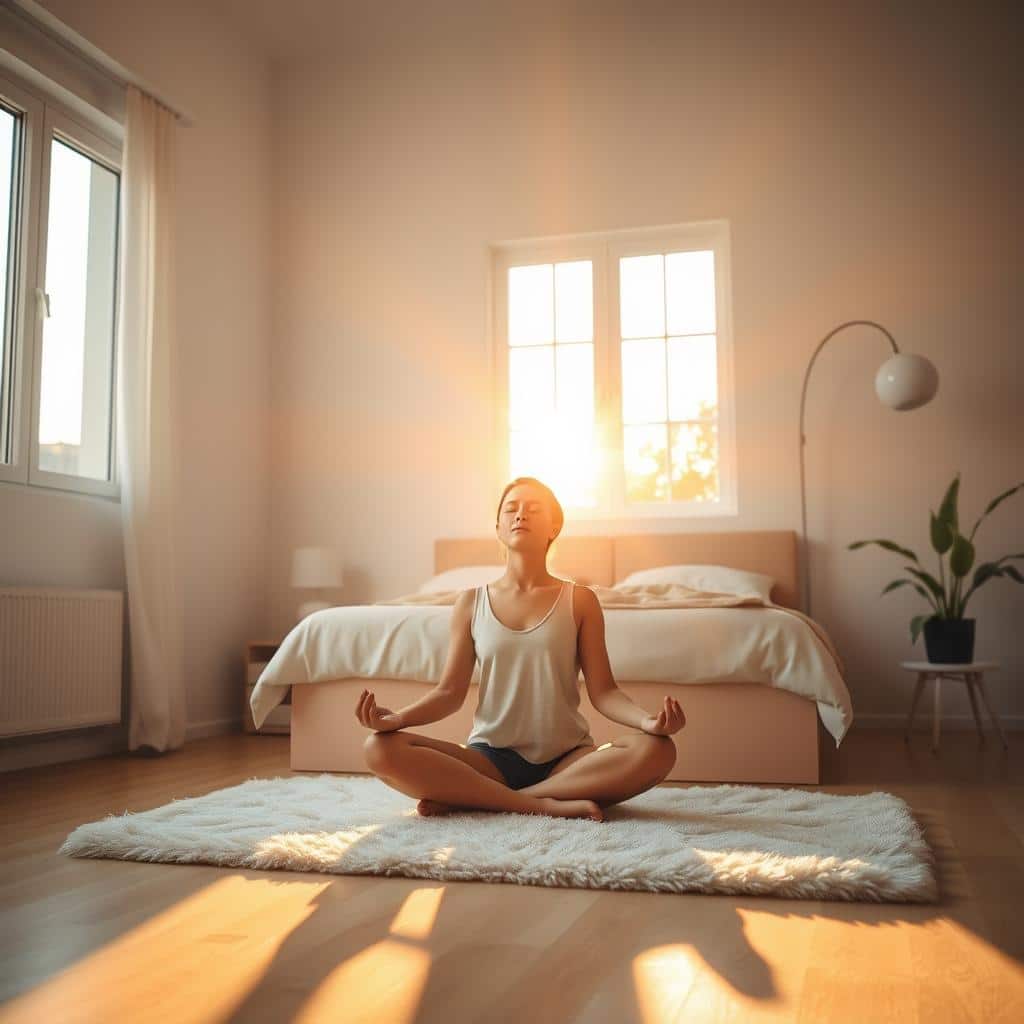
I weave mindfulness into small acts: mindful tooth‑brushing, an attentive shower, or making coffee with full presence. These simple moves make the practice feel like part of the home flow instead of an extra chore.
“Morning Minutes”: three calm minutes before screens
I set a timer for at least three minutes, keep houselights low, and avoid electronics. During those minutes I choose a feel‑good activity—brief meditation, a few stretches, stepping outside, or listening to birds.
Go directly to your practice area after waking
I walk straight to my corner, keep my phone on airplane mode, and protect that small window. If I’m short on time, I make coffee a mindful ritual: feel the mug, notice aroma, and take the first sip with attention.
- Quick close: finish with an ideal‑day snapshot or a single intention.
- Link to breakfast: move slowly between tasks and keep breath as your guide.
Build a consistent meditation routine that sticks
I design tiny prompts that bridge the gap between intention and action. Small changes to my space and simple rules help the habit take root without extra willpower.
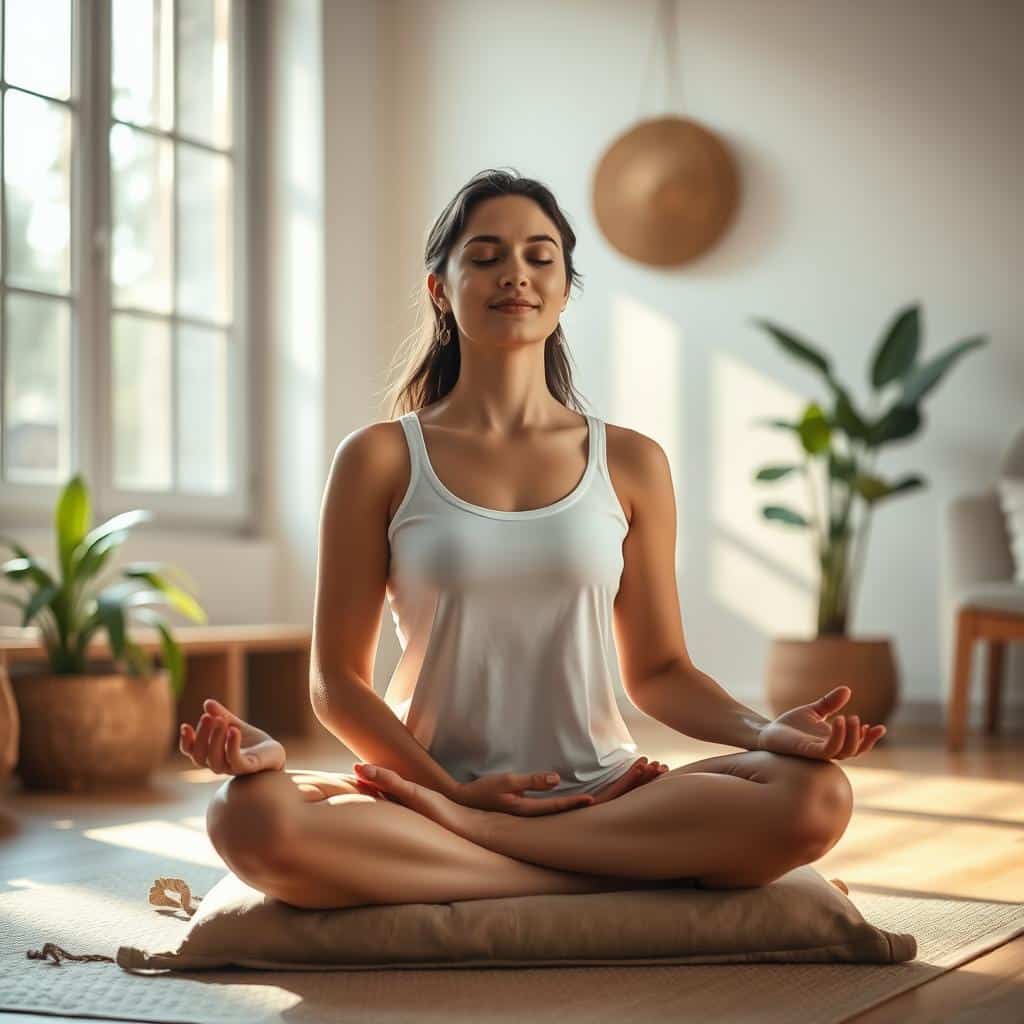
Use behavior design: place cues and refresh reminders
I make the routine obvious by placing a cushion or mat where I’ll see it first. Fresh sticky notes or playful prompts get swapped weekly so my mind doesn’t tune them out.
Create “If this, then breathe” transitions throughout the day
I set tiny rules: if the kettle clicks, I take three breaths; if I sit at my desk, I scan posture. These bridges make practice portable and help my mind pause before autopilot wins.
Start small: one to five minutes, then extend as it fits your life
I commit to one to five minutes at first and track the days I sit. I reduce friction—timer pre‑set, phone on Do Not Disturb—and celebrate small wins so the habit feels sustainable.
“What I practice grows stronger; each deliberate sit strengthens intentional control over autopilot.”
- Link the habit to an anchor (wake, coffee, or finish of breakfast).
- Keep a backup plan for travel days and busy stretches.
- Focus on consistency; lengthening the session comes later.
Overcoming common morning meditation challenges
If I doubt my ability to wake and focus, I treat the next week as an experiment.
Not a “morning person”? Test and adjust your rhythm.
I try short sits for seven days and note how my energy shifts. If early blocks feel harsh, I move the session later or try an evening sit. The goal is to find a way that keeps the practice sustainable for me.
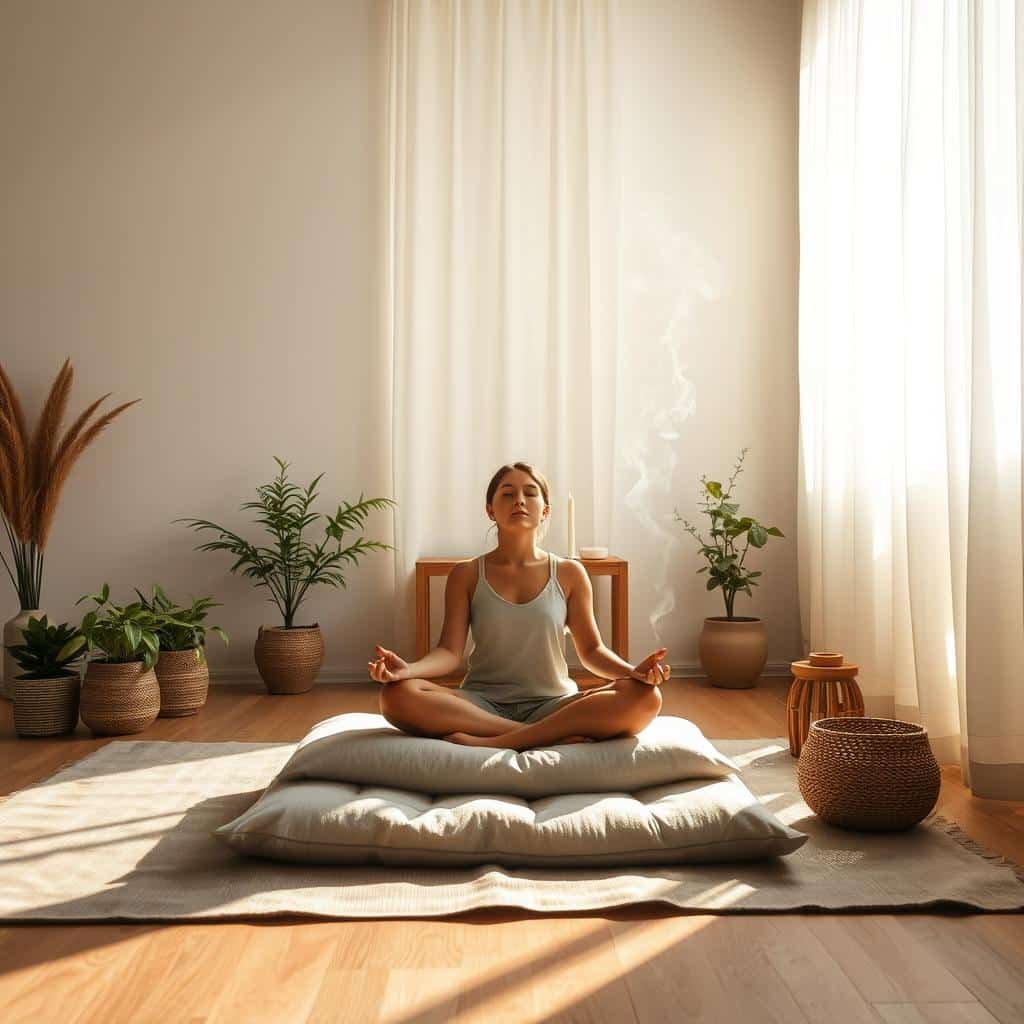
Restlessness, difficult emotions, and practicing gentleness
When restlessness or strong feelings appear, I label them: anger, sorrow, busy. I place a hand on my chest and offer a soft phrase like, “This is tough.” That physical kindness helps lower stress and let the feeling move.
- I reduce sleepiness by opening my eyes slightly or sitting more upright.
- I shorten the session on harder days instead of skipping it entirely.
- I avoid screens before I sit so my mind has a fair chance to settle.
| Challenge | Quick response | Why it helps |
|---|---|---|
| Not a morning person | Try 7 days of 3–5 min sits; shift time if needed | Reveals what fits your natural rhythm |
| Wandering thoughts | Label then return to breath | Reduces self‑judgment and retrains attention |
| Strong emotions | Hand on heart; soft self‑compassion phrase | Soothes the nervous system and allows processing |
Attention, clarity, and performance: what the science suggests
Science shows brief practice can sharpen attention and change how my mind responds to distractions. Research finds that regular mindfulness meditation reduces mind wandering and helps me stay on tasks longer, so my work feels clearer and my follow‑through improves.
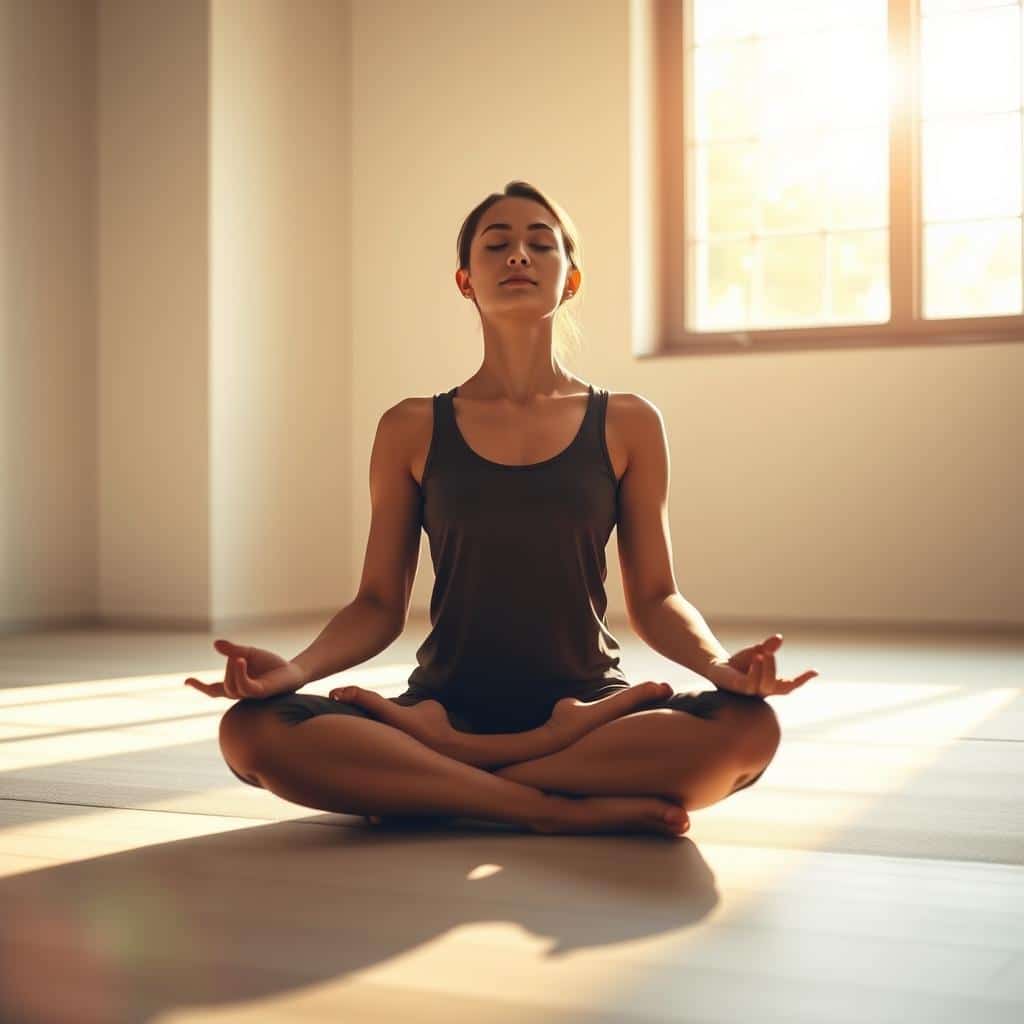
Training attention also appears to counter habituation. That means I’m more likely to notice new cues instead of tuning them out. Over time this keeps my mind responsive to relevant information.
Some studies show attention gains lasting up to five years after training. These durable effects suggest practice builds real neuroplastic change when I practice consistently.
“Mindfulness supports executive control over autopilot, helping people interrupt automatic reactions under pressure.”
I stay cautious where evidence is limited. Findings about attention‑deficit conditions are promising but need larger trials. I avoid overstating results and keep expectations realistic.
| Finding | Practical takeaway | How I use it |
|---|---|---|
| Reduced mind wandering | Longer focus on tasks | Short sits before work; brief check‑ins during the day |
| Countered habituation | Keeps attention alert to new info | Use attention anchors when reading or in meetings |
| Durable attention gains | Benefits can last years | Prioritize consistency and quality over length |
| Limited evidence for ADHD | Promising but not conclusive | Combine practice with professional guidance |
In short, mindfulness meditation helps me build clearer priorities, reduce errors from distraction, and steady my stress response. The key is consistent, high‑quality practice time and gentle, repeatable steps: notice, return, strengthen.
Set intentions and gratitude to guide your day
Before I move on, I take a small, deliberate moment to name how I want the next hours to feel. This closes the sit and connects the practice to action.

Snapshot visualization of your ideal day
I imagine a few key moments unfolding with steadiness and kindness. I see how I respond to a meeting, a conversation, or a task.
I keep the image short: one or two scenes that show me behaving with the qualities I value. Then I pick one small step that links intention to a real action.
A sensory gratitude break with breath as anchor
I take one minute and use the breath to hold attention. I notice one thing in sight, one scent, and one sound I appreciate right now.
Specificity matters: the light on the wall, the coffee aroma, or birdsong makes gratitude concrete. I write a single word on a sticky note to carry this intention into the rest of my life.
- I close with a brief intention naming how I want to show up today.
- I use a quick snapshot of an ideal day to set tone and clarity.
- I take a one‑minute sensory gratitude break, anchored to the breath.
- I revisit the intention at midday to refresh focus and align choices.
“Start the day from sufficiency, not scarcity.”
How I pair meditation with movement and training
A brief anchor before a workout steadies my nerves and sharpens intent. I use short sits on training days so my head and body arrive ready to move.

A quick practice that supports runs and workouts
I use a five‑minute exhale‑pause protocol to steady attention and bring calm alertness into my body. In a few days I notice lower pre‑workout nerves and more enjoyment during hard efforts.
Before I head out, I sit for five minutes, lengthen the exhale, and rest in the tiny pause that follows. This primes focus and helps me meet hills, intervals, or urges to quit with more composure.
- I keep timing tight on busy morning starts so brief practice fits real life.
- During movement I check in with the breath, using a few intentional exhales to reset when I tense up.
- On rest days I choose a gentler sit to release residual tension and aid recovery.
- I log a quick note after workouts linking perceived effort to the pre‑session sit so I can refine what works best.
This way the practice becomes training for my whole life, not an add‑on. I translate the pattern to work sprints: short sit, then focused effort.
Get started with guided morning meditations at home
When I want structure, a short guided track helps me settle faster and stick with practice. I pick a simple series that fits the few minutes I have and keeps friction low.
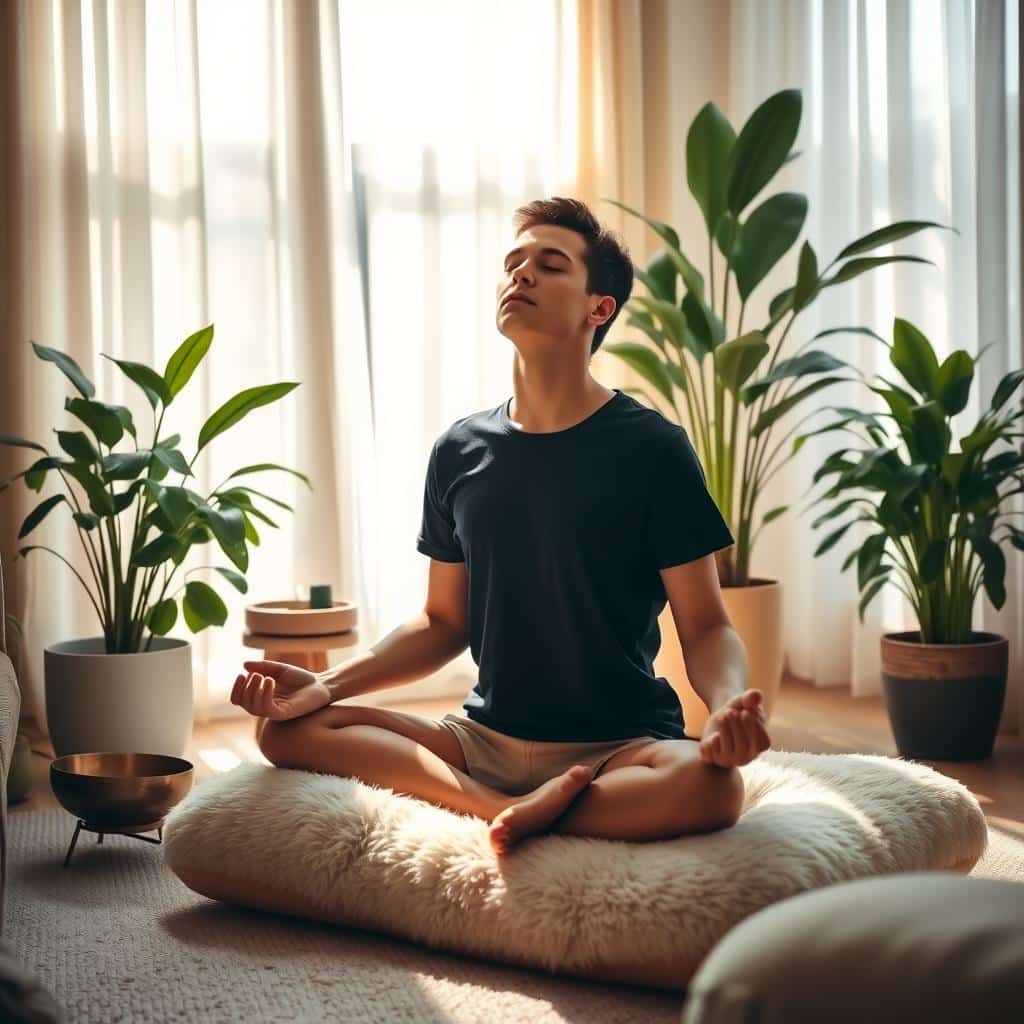
Free trials, beginner courses, and short guided sessions
Headspace offers a 10‑day beginner course that taught me basics and gave a reliable path to sit daily. They have tracks from one to twenty minutes so I can scale as my schedule allows.
I also signed up for a free 4‑day morning guide by email to sample content at home. Using a trial or email series helped me build confidence before I committed to a subscription.
- I choose a short guided series to get started at home with minimal setup.
- I try different teachers and styles to see what helps me settle fastest.
- I schedule the first sessions on my calendar so I follow through when I’re ready.
| Option | Length | Best use |
|---|---|---|
| 10‑day beginner course (Headspace) | 10 sessions (1–10 minutes) | Learn fundamentals and build habit |
| Free 4‑day email guide | 4 short sessions | Sample at home before committing |
| Single guided tracks | 1, 5, or 10 minutes | Quick reset on busy days |
Tip: prepare the night before—headphones charged, timer set—so you can press play and begin without delay. After each sit I jot one sentence about how I feel to track what guides a calmer, clearer start.
Conclusion
To close, I summarize a few practical choices that help me keep steady. I pick a simple place and a short time, sit comfortably, follow the breath, and return with kindness when my mind wanders. This small setup makes a morning meditation doable on busy days.
I use low lights, no screens first, a gentle timer, and clear cues so the session is the easy next step. These small supports help the habit survive real life and deliver the best benefits.
Consistency beats marathon sessions: short, regular practice changes how I meet stress and sharpens attention. I carry one intention and a moment of gratitude into the day, then I try one week of sits and adjust the routine. Tomorrow, five quiet minutes before anything else is my invite to start the day with presence.
